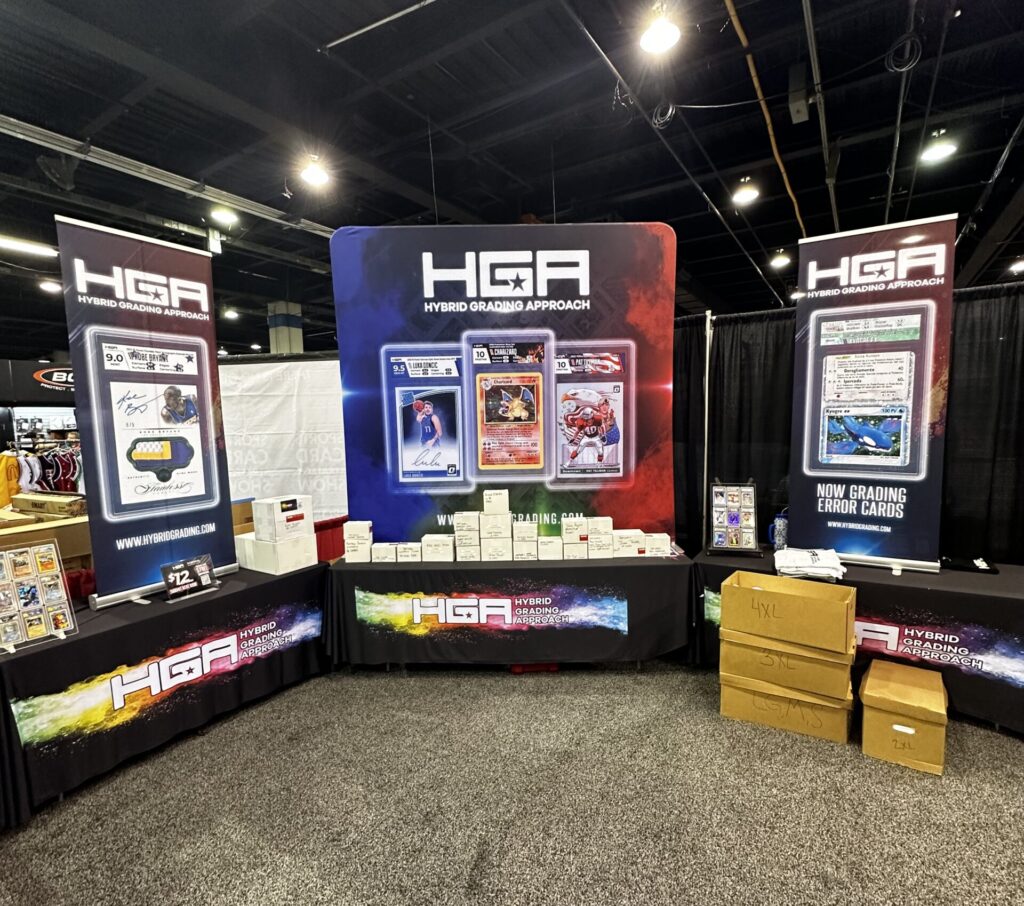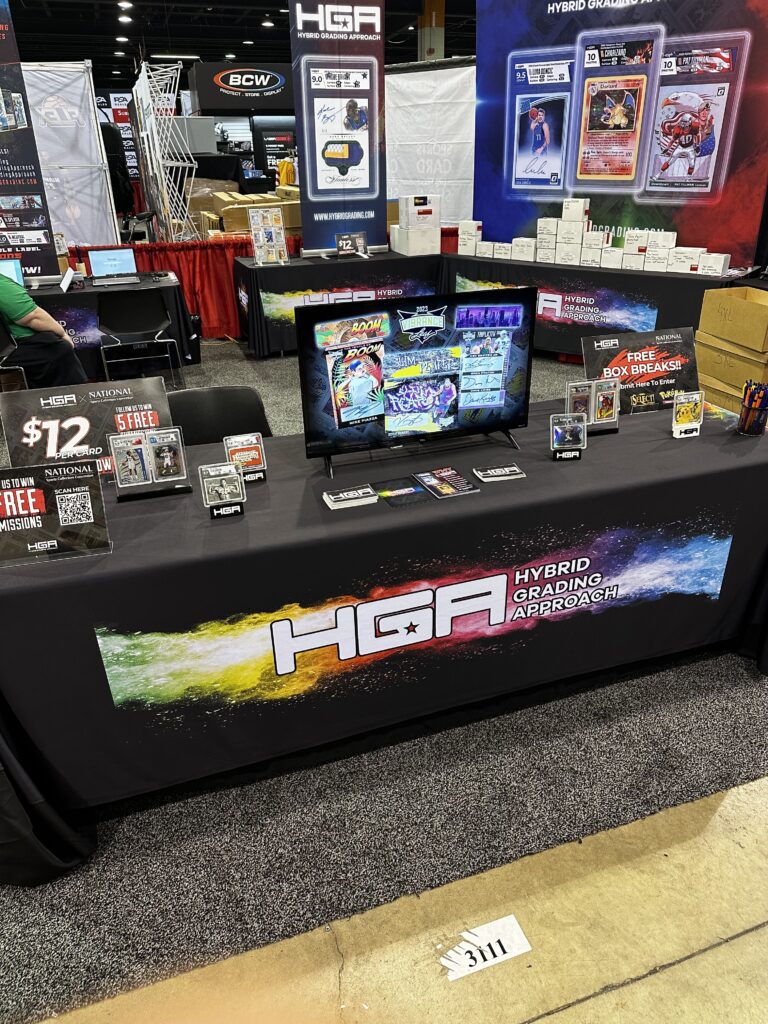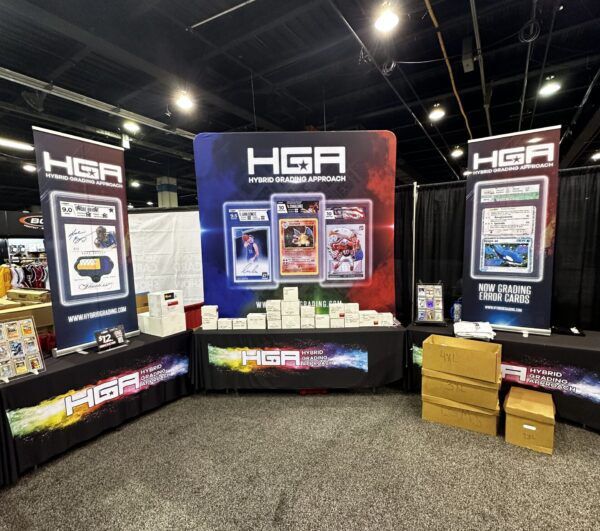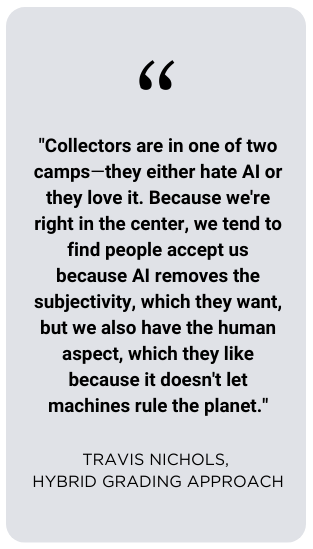#Hybrid #Card #Grading #WorthPoint

Photo courtesy: Hybrid Grading Approach
Artificial intelligence is unquestionably the hottest topic of 2023. With the emergence of ChatGPT and similar online tools, the world is witnessing a new era of technological advancement with both positive and negative implications. While some people are skeptical about adopting these technologies, others are embracing them wholeheartedly. As a result, consumer behavior is changing rapidly, with people not only adapting to a life with digital aids but also learning to make the most of them.
It’s not entirely surprising that the trading card world is quickly becoming an early adopter of the new technology. Just like card collectors were first in the pool with buying and selling online through eBay and other marketplaces, so too is the industry under surveillance from others for working with AI to advance the larger collectibles sphere. One company embracing the technological assist is the relative newcomer, Hybrid Grading Approach.
How Hybrid Grading Approach Affects Card Grading
Hybrid launched right smack amid the COVID-19 pandemic and quickly rose in prominence. By the time Hybrid Grading reached the National Sports Collectors Convention this past July, the company had already graded more than 500,000 trading cards. According to Travis Nichols, Hybrid’s TCG Grading and Research/Authentication Director, the company stands as the fifth largest grader in the industry.
The approach is unique, as each of those 500,000-odd cards goes through a two-stage assessment involving both man and machine.
“Every card that comes in goes through the AI system first,” he says. “The system scans it and puts it through our cloud-based AI that generates a grade. That grade is based on the standards that we created, which translate our language into machine language. The computer gives us that grade, and then a human grade goes in and reviews the card as well. Those grades are then compared.”
In this respect, Hybrid creates a perfect blended approach. While much of the world fears AI taking over from humans in the job market, Hybrid creates a parallel workforce where each learns from the other. Together, they foster an environment where the personal touch is augmented by machine learning rather than being replaced, and human essence, which isn’t without fault, is supported by computerized assessment.
“We can’t rely solely on [AI] to grade your cards. We have trained graders as well as trained AI,” Nichols says. “That helps us eliminate the subjectivity, the bad days, anything that people talk about in the human-grading world where you might say, ‘Hey, my grader had a bad day, so he gave my card a 3.’ We aim to eliminate that by working with AI and the human grader.”
Differences of Opinion
Naturally, when you enter any industry where opinion comes into play, there will be debate. This is already a common occurrence when collectors dispute grading company assessments and submit their cards to competitors by removing them from their protective slabs.
In a two-stage approach like Hybrid’s, there are bound to be similar disagreements. For example, AI may give a card a 9.5, and human assessment may give it an 8.5, or vice versa. As Nichols explains, the card goes to a third authority in this case. “If there’s ever any issues, conflicts or concerns, that [card] is taken to a lead grader whose sole job is to determine whether the human or AI is correct,” he says.
This lead grader is a second set of human eyes on the piece because, relatively speaking, artificial intelligence is in its infancy stage. “We realize AI technology is amazing, but it’s still developing,” Nichols comments.
The dual position undoubtedly is working. “Collectors are in one of two camps—they either hate AI or they love it,” Nichols says. “Because we’re right in the center, we tend to find people accept us because AI removes the subjectivity they want, but we also have the human aspect, which they like because it doesn’t let machines rule the planet.”

Photo courtesy: Hybrid Grading Approach
Standing Out
Hybrid is not only differentiating itself in its assessment model but also in its approach to the look of a graded card. Rather than creating a standardized label that is inserted into each slab, the company customizes the label before it’s placed into the slab. Regular options include team colors, for example, but they are fully customizable for collectors as well.
The result is a casing and card that showcase very strongly together. “That’s the thing about it—people collect these cards. There’s a lot of people selling. Who are they selling to? Collectors who are going to display them, and those displays should matter,” Nicols says.
And this may be the end-game calling card of Hybrid. The primary customer will decide whether to take the two-step approach to grading, but a percentage of the audience will also look at the potential resale. Hybrid Grading Approach’s unique look and feel sets them apart from competitors and reinforces their trustworthiness in the collecting world.
So when we talk about the next step in the sports card grading world, which has never been more important for collectors and investors, Hybrid is taking things two steps at a time.
Jon Waldman is a Winnipeg-based writer. He has written for Beckett, Go GTS, Canadian Sports Collector, and several other hobby outlets over his two decades in the hobby. His experience also includes two books on sports cards and memorabilia. Connect with Jon on Twitter at @jonwaldman.
WorthPoint—Discover. Value. Preserve.





